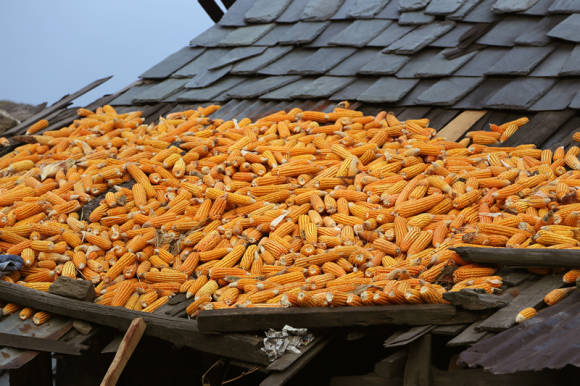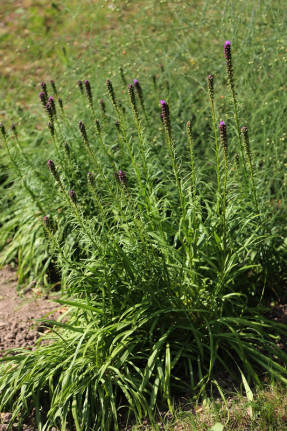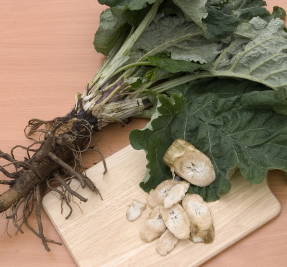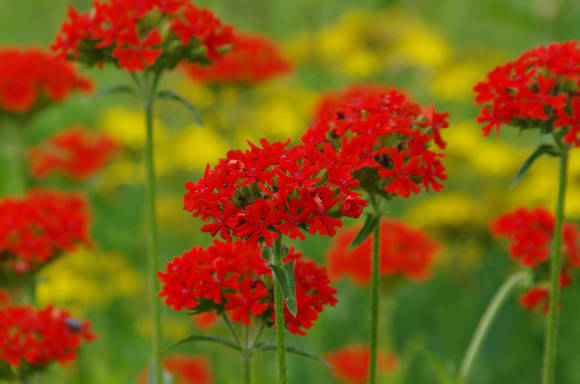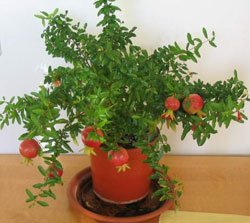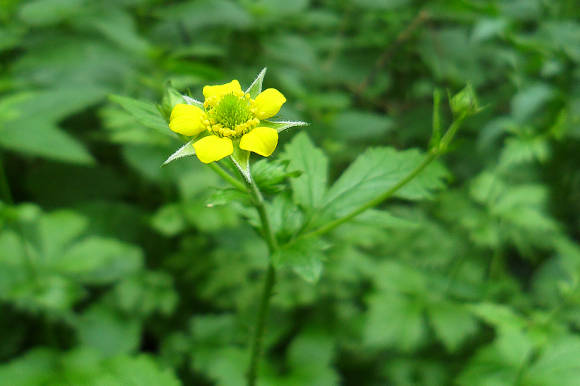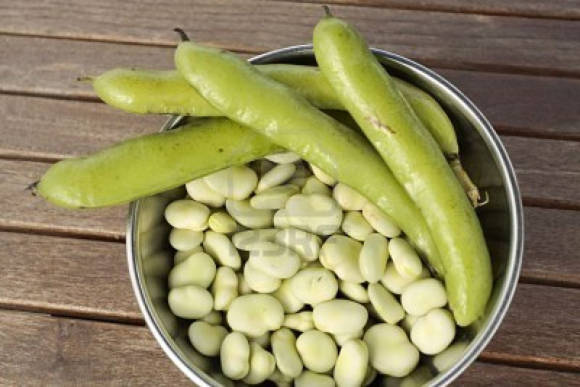 It's February. It's time to open the gardening season - to start growing seedlings of vegetable crops. Already now you can sow celery, pepper, eggplant. But do not rush with tomatoes, this crop grows faster than the same pepper, so its sowing time is March. If you do not live in a rural area and do not have an equipped greenhouse, do not despair, you can grow full-fledged seedlings in a city apartment. To do this, you need to know and comply with some conditions.
It's February. It's time to open the gardening season - to start growing seedlings of vegetable crops. Already now you can sow celery, pepper, eggplant. But do not rush with tomatoes, this crop grows faster than the same pepper, so its sowing time is March. If you do not live in a rural area and do not have an equipped greenhouse, do not despair, you can grow full-fledged seedlings in a city apartment. To do this, you need to know and comply with some conditions.
1. Selection and calibration of seeds.
None of us is safe from misgrading and buying low-quality seed. Also, we cannot be 100% sure of the quality of the seeds we grow ourselves. Buy varieties and hybrids of well-known companies that have already been tested on your own experience, but do not be afraid to experiment with new crops, varieties and producers.
Select carefully all hollow, damaged, malformed seeds. This is best done not by eye, but by calibration, if there are a lot of seeds. A small number of them are selected by hand.
In a 5% solution of sodium chloride (5 g per 100 ml, i.e. half a glass of water at room temperature), you can calibrate the seeds of tomato, pepper, eggplant. Cucumber seeds are calibrated in a 3% solution. Dry seeds are poured into the solution and mixed thoroughly to remove air from their surface. Leave for 3-5 minutes - good seeds will sink to the bottom, and useless ones will remain on the surface. The seeds that have settled to the bottom - suitable - are washed from salt and dried. It is important to remember that fresh seeds are calibrated more accurately than those that have been lying for several years and have time to dry out.
Seeds of peas, beans, beans are calibrated in ordinary cold water, removing all floating seeds.
2. Disinfection of seeds.

80% of vegetable diseases are seed-borne, and only 20% are soil-borne. That is why disinfection cannot be dispensed with. Only if it is indicated on the package that the seeds have already been disinfected, and if the seeds are pelleted, they do not need to be disinfected.
The easiest way - heat treatment, i.e. heating in hot water. It is carried out in a thermos, placing the seeds in linen (gauze) bags. Remember that with a complete disinfection mode, up to 20-30% of seeds may lose germination. This does not mean that you have overheated the seeds. You did everything right - weaker, less viable seeds died.
Water heating mode:
- cabbage crops (cabbage, radish, turnip, turnip, etc.) + 52-54 ° C, 20 minutes;
- tomato and physalis + 50-52 ° C, 30 minutes;
- eggplant + 50-52 ° C, 25 minutes
- beets + 48-50 ° C, 25 minutes.
After warming up, the seeds are immediately placed in cold water for 2-3 minutes !!
It is imperative to use a thermometer and a stopwatch when warming up! The regime must not be violated!
The second method is - pickling in potassium permanganate. The solution should be 1-2%. If you do more concentration, you can harm. To prepare a 1% solution, add 1 gram of potassium permanganate to half a glass of water (100 ml). The solution is thick, almost black. If it is not possible to accurately measure 1 gram, use the volumetric method. One teaspoon of potassium permanganate without top is dissolved in three glasses of water (600 ml). An untop teaspoon is when the excess substance is removed with the flat side of the knife when you run it over the top of the spoon.
Seed treatment mode:
- celery, onions, lettuce, radish, tomato, physalis, peas, beans, corn - 1% solution, 45 minutes;
- eggplant, peppers, carrots, cabbage, parsnips, dill, pumpkin seeds - 2% solution, 20 minutes.
The water temperature is room temperature, after disinfection, be sure to rinse the seeds in running water !!
3. Soaking seeds, treatment with biological products.
 It is best to soak the seeds in melt water or rainwater. However, it is not recommended to collect snow or rainwater in cities due to pollution.You can freeze tap water - so we get rid of salts, and the water acquires the ability to stimulate the germination processes.
It is best to soak the seeds in melt water or rainwater. However, it is not recommended to collect snow or rainwater in cities due to pollution.You can freeze tap water - so we get rid of salts, and the water acquires the ability to stimulate the germination processes.
Soaking significantly accelerates the germination of crops such as carrots, celery, parsley, parsnips, dill, onions, and peppers.
Seed soaking rules:
- the seeds are soaked after disinfection;
- the volume of water should be 50-100 times the volume of the seeds. Do not be afraid to immerse the seeds in water completely - when they swell, they do not need air, they will not suffocate;
- stir the seeds several times;
- the water is periodically changed if it turns yellow or brown;
- the soaking time depends on the swelling rate. So, 5-7 hours are enough for pea seeds, seeds of cabbage, tomatoes, cucumbers swell in 18 hours, seeds of onions and celery crops are soaked for at least 36 hours;
- do not soak seeds in a solution of fertilizers, ash, saline solutions, since salts inhibit germination;
- after soaking, the seeds are either sown immediately, slightly dried until flowable, or put on germination.
It is useful to use biologically active substances. There are now about two hundred of them.. Let's dwell on three - Epin, Humat, aloe juice. The use of the first two drugs accelerates the germination process and, most importantly, reduces the sensitivity of seedlings to unfavorable growing conditions, increases plant resistance to diseases, triggering the plant's own defense mechanisms. When using aloe juice, remember that it is not suitable for all seeds. So, you cannot soak seeds of pumpkin crops, onions, peppers and celery in it. Use it for eggplant seeds, cabbage seeds, lettuce, and is especially good for soaking tomato seeds.
Seed soaking is carried out in a solution of room temperature above +20 ° C... If the temperature is lower, bioactive substances work less efficiently.
Soaking seeds in Epin's solution.
2 drops of Epin are dissolved in half a glass of water (100 ml), the liquid is stirred. Processing time - 18 hours at a temperature of + 23-30 ° C with occasional stirring.
Soaking seeds in a solution of potassium or sodium humate.
The best form of humate is ballastless peat humate. Prepare a 0.01% working solution from the mother liquor. Stock 1% solution - 1 gram of powder is diluted in 100 ml of water (half a glass). Store in the refrigerator. A 0.01% working solution is obtained by diluting 1 ml of the mother liquor in 100 ml of water. Processing time - 24 hours at a solution temperature of + 27-28 ° C with periodic stirring.
Soaking the seeds in aloe juice.
To obtain juice, take the not yellowed lower leaves from a three-year-old or more mature plant. They put it in the refrigerator for a week. The seeds are kept in juice for 24 hours, after which they are sown without washing.
4. Characteristics of seedling soils.
 Which soil to choose from those offered in the store? Or is it possible to take the land from the garden?
Which soil to choose from those offered in the store? Or is it possible to take the land from the garden?
You can do this and that. Most importantly, the soil must meet the needs of young plants. What are these needs?
- The soil should be structured - neither a heavy clayey nor a light sandy substrate will work. They cannot ensure the normal development of the root system, as they are poor in nutrients, poorly permeate or retain water, dry out slowly or quickly.
- The soil should be nutritious, disinfected, with an acidity index within the pH range of 5.8-6.5. Should not be wet or dry. Must be made from high-moor peat
Soils are commercially available that can be classified as wet or dry. Wet before use does not require preliminary preparation. However, due to constant humidity, mold fungi often develop on them, depressing seedlings. If the soil smells like mold, don't use it. Also, in wet soil, if it is poorly disinfected, eggs and larvae of soil pests may be present.
It is better to purchase soils prepared using bio-fermentation technology - soils "Avtep", "Ground for seedlings" VAKZO and others, or prepared by worms.
Specialized soils for seedlings, for example, "Rostok", "For a tomato", "For a cucumber" and others, are prepared from the same components and differ only in the ratio of nitrogen, phosphorus and potassium, which does not give a tangible benefit when growing seedlings, so how the process of plant nutrition is completely dependent on humans. You cannot grow full-fledged seedlings, relying only on the fertilizer contained in the soil.
There are also dry-pressed briquettes on sale - "Torfolin", "Violet", "Natural fertile soil" and others. They must be pre-soaked. So, for example, from a briquette "Torfolin A" weighing 750 grams, about 6 liters of loose soil is obtained. But it is better not to use these soils in their pure form, but be sure to add sand to them at the rate of 2 parts of soil and 1 part of sand. In the soil "Fiala" the concentration of fertilizers is high, it is better to use it for picking seedlings, and not for sowing seeds.
Be sure to check all purchased soils for acidity and, if necessary, neutralize with dolomite flour.
If you add a microbiological preparation of the Baikal, Renaissance or Shining series to the soil, it will enrich it with useful microflora and make the growth and development of seedlings more comfortable. The use of drugs of this type becomes mandatory if the soil has been sterilized.
5. Limiting factors for growing seedlings.
 Such factors include a lack of light, sudden temperature fluctuations, improper sowing, uneven watering, insufficient nutrition, and a lack of living space.
Such factors include a lack of light, sudden temperature fluctuations, improper sowing, uneven watering, insufficient nutrition, and a lack of living space.
- When seedlings appear, it is necessary to light up the seedlings for the first three days around the clockusing phytolamps or fluorescent fluorescent lamps. The distance from the lamp to the plants at first is 20 -25 cm, as the seedlings grow, the lamps are raised. Additional lighting is carried out on average for 3-5 weeks. Direct sunlight can cause leaf burns.
- Avoid drafts, water only with warm water (the water temperature should be 2-3 degrees higher than the air temperature). The container with seedlings should not stand directly on the windowsill (especially if it is made of stone); pallets and stands should be used.
- It is very important to sow the seeds at the optimum lip. Both too deep and shallow sowing leads to a delay in germination, weakening of seedlings. The sowing depth is calculated based on the seed size. The sowing depth depends on the seed diameter. Sowing is carried out to a depth of two diameters of the seed, that is, if the diameter (but not the length!) Of the seed is 0.5 cm, the sowing is carried out to a depth of 1 cm. Small seeds are sown superficially, sprinkling with a layer of sand no thicker than 0.5 cm.
- Do not overdry or overmoisten the soil - young shoots and seedlings are very sensitive to both lack and excess of water.
- Watch the dressings, give them fractional, balanced in the content of elements, do not exceed the concentration. A young plant consumes less nutrients than an adult. The lack of elements causes starvation, which, in turn, negatively affects the plant and future harvest.
- If the plants are cramped, they begin to compete for light, water, nutrition, stretch, weaken, and may die. Do not sow too thickly, make a pick in time, do not try to place all the plants on the same windowsill.
If you see that the plants grow poorly, are depressed, then do not rush to immediately water them with all kinds of stimulants. Remember - stimulants can only make life easier for a plant, but not eradicate the cause of ill health. Adjust the growing conditions first.
Healthy seedlings are the key to the success of the gardener!
